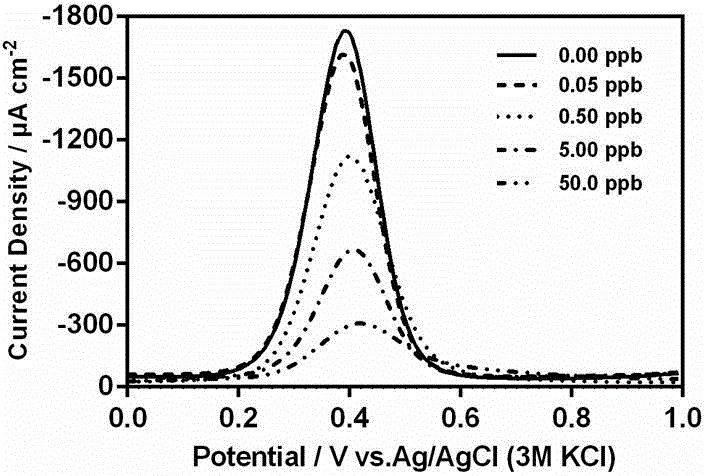Method for rapidly detecting pesticide residue based on plant esterase
A plant esterase, fast technology, applied in the field of analytical chemistry, can solve the problems of difficulty in obtaining raw materials and high cost, and achieve the effects of high sensitivity and precision, simple operation, and strong anti-interference ability
- Summary
- Abstract
- Description
- Claims
- Application Information
AI Technical Summary
Problems solved by technology
Method used
Image
Examples
Embodiment Construction
[0034]The present invention will be described in further detail below in conjunction with specific embodiments and accompanying drawings.
[0035] 1. A method for rapid detection of organophosphorus pesticides based on plant esterase, The detection object is an organophosphorus pesticide (methyl parathion or malathion), which is detected by a biosensor based on plant esterase.
[0036] 1. Detection principle: see the detection principle figure 1 , in the hydrolysis equation (1), the substrate 1-naphthyl acetate is hydrolyzed by plant esterase to produce 1-naphthol and acetic acid (electroactive substances), thereby generating a current signal response, which will be inhibited with the addition of organophosphorus pesticides As the reaction proceeds, the electroactive products decrease, so the current signal decreases. With the difference in the amount of organophosphorus pesticide added, the magnitude of decrease in the current signal is different.
[0037] 2. Detection of ...
PUM
| Property | Measurement | Unit |
|---|---|---|
| thickness | aaaaa | aaaaa |
| molecular weight | aaaaa | aaaaa |
Abstract
Description
Claims
Application Information
 Login to View More
Login to View More - R&D
- Intellectual Property
- Life Sciences
- Materials
- Tech Scout
- Unparalleled Data Quality
- Higher Quality Content
- 60% Fewer Hallucinations
Browse by: Latest US Patents, China's latest patents, Technical Efficacy Thesaurus, Application Domain, Technology Topic, Popular Technical Reports.
© 2025 PatSnap. All rights reserved.Legal|Privacy policy|Modern Slavery Act Transparency Statement|Sitemap|About US| Contact US: help@patsnap.com



